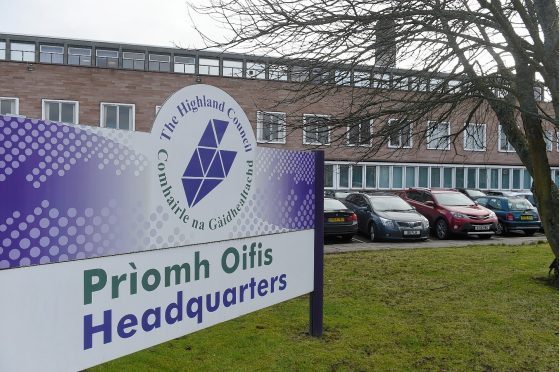Highland Council is to demand developers pay more than triple what they contribute just now to shore up Inverness’s ailing schools.
Members of the Places Committee will be presented with proposals next week – which will apply with immediate effect – to raise the maximum contribution from £2,013 to £6,983 for each new build.
The details emerged as city councillors and officers met behind closed doors yesterday to float ideas on how to tackle the crisis of school overcrowding in the city.
And the option to raise developer contributions in other parts of the Highlands is also being considered.
Key players in the housebuilding industry have reacted to the move, with one stating the money will simply be added on to the house price as a services tax.
But last night Inverness South councillor, Ken Gowans, said: “We are not doing this out of choice but doing it out of necessity.
“We currently have a crisis in our schools, and it’s self evident that developer contributions in the past have been inadequate to fund schools infrastructure and the needs of our growing communities.
“We can not continue to levy charges that are currently in place. It’s the council tax payers that have to pick up the tab to subsidise developers’ profits.”
The details were revealed in papers for next Wednesday’s Places Committee.
Proposals were formed after numerous reports to different council committees on the pressures being felt, particularly in the school estate in Inverness.
All Inverness secondary schools are predicted to exceed capacity within the next 15 years. And city primary schools with their entire roll capped include Cradlehall, Hilton, Inshes, Lochardil and Milton of Leys.
Excluding land costs, the per-dwelling primary school costs would be £6,983 compared to the existing £2,013, and the new secondary school costs would be £3,449 compared to the existing £1,039.
The report provides clarification on the approach to be taken to appropriately manage the impact of development on schools, and a wider review of guidance will be reported to the committee in November.
The new rates would be applied to any development where there is a clear need for new schools as a result of their construction.
Gary Johnston, director of G H Johnston building consultants, said: “We can understand why the council wish to do this, with government cutbacks, but we have to be very careful on the impact of people buying houses. If they put the money up it can only go on to the end price value of the house, which then adds tax on buying a house that’s going into services.”
Mr Johnston added that it would also be concerning if the council raised charges in “outlying parts” of the Highlands where it’s more expensive to build.
And prominent Inverness housing developer Willie Gray said there “needs to be a consitency of approach” for all developers and a “significant lead in time” for housebuilders to incorporate this into their budgets when bidding for land.










